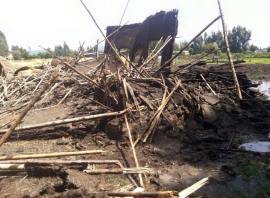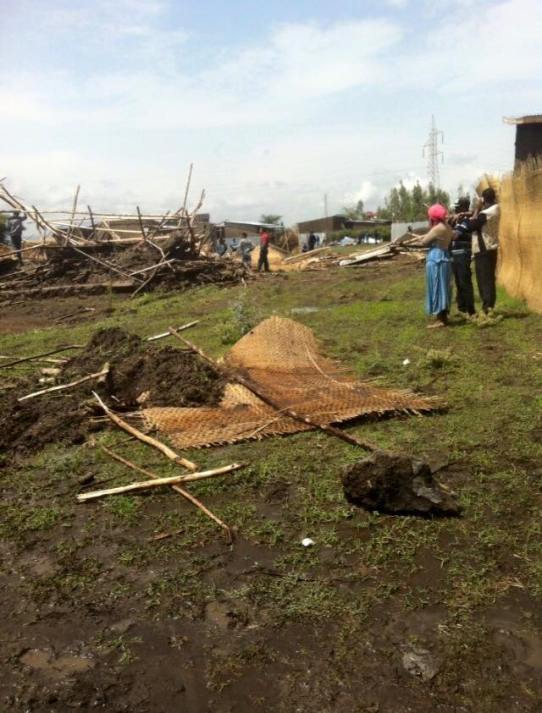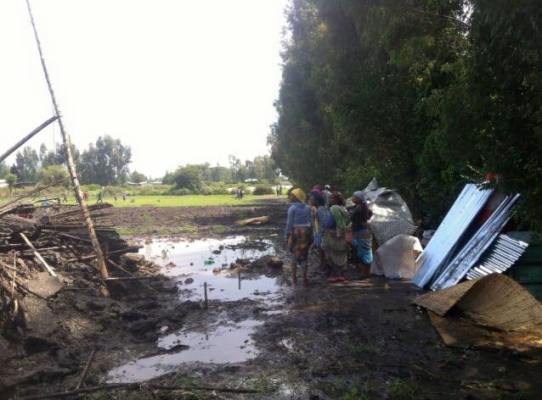Mekbib Gebeyehu, PhD
Dura nagaan dhaama
A combination of long period political and economic instability has produced chronic famine in Ethiopia. We could recall the 1972/1973 and 1984/1985 starvation episodes that devoured hundred thousands of lives. Even this time millions of people are starved to death.
It is taken for granted that millions who are starving or threatened with starvation in Ethiopia to day are the victims of a drought caused by an unpredictable and unpreventable reduction of rainfall or natural disaster. In other words, drought or decrease in the annual rain fall is offered as an explanation for famine in Ethiopia. In reality, however, the famine we are witnessing in Ethiopia is not due exclusively drought or natural catastrophe as the Tigray based Ethiopian minority regime and some “researchers” would like us to believe. It is a good example of an inevitable result of bad government polices.
Drought, climate variation and other natural calamities (disasters) occur not only in Ethiopia, but in any part of the world. However, drought does not necessarily result in famine. Famine can be avoided if the government takes its responsibility. Therefore, there are good reasons to consider political instability and lack of democratic governance as significant factors.
Famine should be understood more broadly as a symptom of some thing the solution of which strongly demands a deep understanding of political and environmental systems of the country. In other words famine vulnerability has to be sought in human and natural elements.
Let me try to elaborate this with a very simple formula.
F = HN
Where: F = Famine; H = Human intervention; N = Natural interference
Where: F = Famine; H = Human intervention; N = Natural interference
Human Intervention
Lack of political and economic instability:
Lack of democracy and peace are major obstacles which have the main effect on famine in Ethiopia. Under authoritarian rule, it is always difficult to fight famine and poverty. The TPLF minority government which is obviously on turmoil seems determined to conduct its campaign under the so called democracy which may as well target national groups to fight what it calls narrow nationalism and separatism.
It has been observed that famine do not occur in democratic countries with a relatively free press and active opposition parties because people have established mechanisms to compel governments to address their pressing needs. Moreover, famine in general and starvation in particular happen because of the failure of governments. Democratic governments are bound by social and political contract to respond to the need of their citizen. They know that failure of the contract on their part brings an end to their stay in power. Elections and the possibility of public criticism make the penalty of famine affect the rulers as well – not the starving people.
Therefore, the main roots of the famine crises in Ethiopia are related to political instability and economic uncertainties. Changes in these features are required on a real urgent base.
Misplaced political priorities can also easily lead to famine. For example, if high emphasis is given to the agricultural development sector and annual imputes into the rural sector are increased, Ethiopia can feed itself with out any problem. Serious studies indicate that only 20% of Ethiopia’s 65% suitable land is used for cultivation.
Natural interference
Drought, pest and disease are good examples of natural interference. Pest and disease are not reported to cause the famine in Ethiopia (at least the government did not claim). Drought by itself is the result of deforestation, soil erosion and biological soil deterioration. Drought triggers the famine crises, but does not cause it. It is to be recalled that calamitous forest fires raged across large areas of the country especially in Oromia region and destructed a vast area of forest. Such type of destruction of forests leads to lowering of soil moisture and suppress rail fall because much of the rain comes from water evaporated off forests/vegetations.
Drought is an environmental issue that has political and social dimensions. Of course, famine preconditions and drought /Environmental degradation are related. The reasoning becomes dangerous however, if we neglect other important agents of famine described above and focus only on drought. Though the Tigray minority regime has failed to address the cause of famine in Ethiopia, there are serious documents that prove that the famine is caused by human intervention rather than by natural catastrophe. Droughts may lower the agricultural production, however, it does not necessarily result in famine anywhere in the world
As the forest is destroyed, it holds less water and produces a drier local climate or drought. Therefore destroying forest reduces not only the amount of rain but also the moisture to evaporate or run off damaged soils. The problem is that the soil’s water-retaining capacity has been reduced by human interference with nature.
The most important thing is to understand that drought is not the direct cause of famine. Assume that drought in Ethiopia has resulted in low levels of production. Does this lead us to conclude that it results in famine? No! People do not starve in a drought related famine simply because there is low production or no food. Famine is influenced by working entire economy. It is very important to take an adequate view of the politico-economic processes that lead to famine in Ethiopia which continue to kill millions of people. What determines whether a person is starving is its food entitlement that is the amount of food he or she can obtain, own and use, not just the total availability of food in the country or region. I can give Ethiopia as an example. Throughout the famine 1984-1985, Ethiopia was a net exporter of food, Ethiopia still export food.
Given the deep-seated interdependences that influence economic and political deprivations and famine, a narrowly drought centred view would defeat the purpose finding practical ways of fighting famine in Ethiopia. Political-economic-peace-democracy and famine interdependences have to be adequately seized for the ultimate elimination of famine and starvation in Ethiopia.
Conclusion!

 innee
innee


